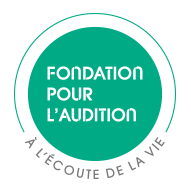BOULLAUD Luc
Project status: closed
The project led by Luc Boullaud in the Imaging and Brain Unit in Tours aims to identify the molecular mechanisms involved in noise-induced hearing loss. His approach is based on an inventory of the biochemical compounds present in the fluid bathing the sensory hair cells. The discovery of biomarkers linked to damage could facilitate diagnosis and lead to the development of personalized treatments.
In about 50% of cases of acquired sensorineural hearing loss*, it is impossible to know the exact site of the lesion, because about 30 different cell types may be involved in the cochlea, the sensory organ of hearing, in the inner ear. The patient's performance after aural rehabilitation depends directly on the cells affected, which means this parameter is of major prognostic value. “That is why my work aims to identify molecules characteristic of the mechanisms leading to the auditory injury, to understand the relevant molecular pathways and link them to the damaged cells,” explains Luc Boullaud, an ENT resident and master student supervised by Prof. Davis Bakhos. This research will be carried out on an ovine model in partnership with the National Research Institute for Agriculture, Food and the Environment (INRAE) in Tours. “My team has shown that the ewe cochlea is very close to the human cochlea from an anatomical and physiological perspective, and we’ve developed expertise in this model. I’m going to study in particular the perilymph, the liquid bathing the hair cells in the cochlea, where all the metabolites** produced by cellular reactions are found.“This Fondation Pour l'Audition funding is very rewarding, since it recognizes the interest in my project shown by experts in the field. The trust Fondation Pour l’Audition places upon me provides further motivation to continue along this path for the benefit of patients.”
An exhaustive inventory of metabolic compounds
The young doctor will use an emerging technique to carry out an exhaustive inventory of the metabolites contained in the perilymph representing several thousand compounds! “I will take a perilymph sample first from the healthy ear and then from the other ear experimentally deafened by noise trauma. The differences in metabolites will indicate the molecular pathways involved, and the precise mechanisms leading to the destruction of the sensory cells and hearing loss. This knowledge could, in the future, lead to preventive measures and innovative therapies.”
Doctor Luc Boullaud
ENT resident
ENT department, Tours University Hospital, France
Inserm Laboratory U1253, Tours, France
Related scientific publication(s):
- Luc Boullaud, Hélène Blasco, Thuy-Trân Trinh, David Bakhos. Metabolomic Studies in Inner Ear Pathologies. Metabolites. 2022 Feb 26;12(3):214. doi: 10.3390/metabo1203021.
- Luc Boullaud, Hélène Blasco, Eliott Caillaud, Patrick Emond, David Bakhos. Immediate-Early Modifications to the Metabolomic Profile of the Perilymph Following an Acoustic Trauma in a Sheep Model. J Clin Med . 2022 Aug 10;11(16):4668. doi: 10.3390/jcm11164668.
*Surdité neurosensorielle : surdité due à l’atteinte des cellules sensorielles de l’oreille interne (cellules ciliées), des connexions avec les cellules nerveuses qui constituent le nerf auditif ou des cellules nerveuses elles-mêmes, jusqu’au cerveau.
**Métabolite : composé organique qui contribue au métabolisme (l’ensemble des réactions de notre corps) ou qui est fabriqué au cours du métabolisme.
